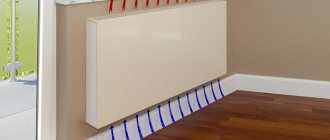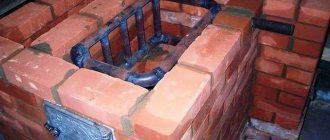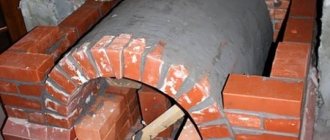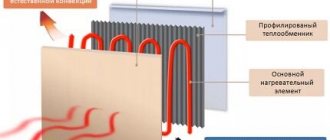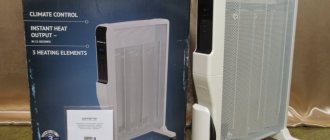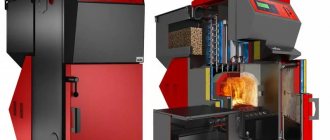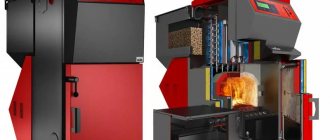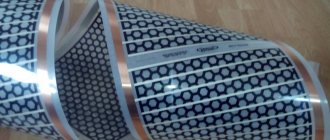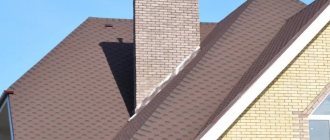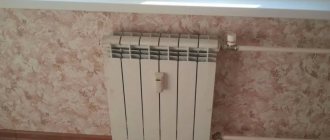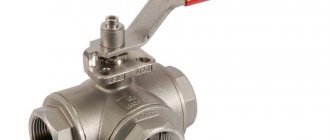In our country, installing a fireplace has always been very expensive.
Moreover, these devices were characterized by low efficiency and consumed a lot of fuel. Caring for such a product has always been difficult. After the appearance of a pellet fireplace, many problems instantly disappeared. The design became more complex, the fuel was replaced with pellets, and it became possible to use automatic loading. Automation freed the fireplace from energy dependence. Perhaps this feature has decreased in popularity.
Advantages of the fuel used
The finished pellet is characterized by high density and low humidity (8-12%). This is very important for a stable combustion process. When the fuel has a very low moisture content, a large release of thermal energy occurs and the efficiency of the system increases. The fuel burns almost completely. Ash formation becomes minimal. Let's compare the amount of heat generated by one ton of different fuels:
- pellets - 3500 kWh;
- hard coal - 7000 kWh;
- firewood - 2000 kWh;
- gas - 10,000 kWh.
Inexpensive pellets are better than regular firewood. However, they generate much less heat than other energy sources. It's all about the price. After research, it turned out that today only pellets can be called the most economical fuel. This is the main reason for the great popularity of such fireplaces in European countries.
Operating principle of furnaces
Figure 4. Industrial-type pellet boiler
Pellet boilers require electricity to function. Thanks to it, the control unit, fan and auger operate. After loading the granules, they are fed in portions through a screw into the combustion chamber. Due to the absorption of air from the room, fuel ignites. It takes a maximum of 10 minutes to start the system.
Important! The independence of furnaces from power systems is conditional. Without electricity, boilers cannot operate
The gases generated during the combustion process enter the heat exchanger. From here a fan distributes them throughout the room. The smoke goes up the chimney. Most modern models are equipped with a thermostat that sets and controls a certain temperature in the room.
The resulting ash ends up in the ash pan. There is very little waste from burnt pellets. The average cleaning frequency is once a month. Advanced models require even less attention to this aspect - up to the elimination of waste every two months.
In the presence of a water heating system, along with the air, the liquid is also heated. Water circulates through the pipes, entering special containers if necessary.
Automation greatly simplifies user interaction with the stove. The computerized system makes every stage of the boiler operation more efficient and safer.
Figure 5. Boiler operation diagram
How does a pellet fireplace work?
In appearance, this product is very similar to a regular wood-burning firebox. But if you look inside, it immediately becomes clear that the operating principle is fundamentally different from already known systems. This device is considered a high-tech heating device with high efficiency levels.
The main feature of the newest pellet fireplace is the automatic heat generation process. This became possible thanks to control over the fuel supply. There are even models where the air supply is controlled for better combustion.
Through the glass door you can admire the flames. In principle, such a door performs only a decorative function. It is practically not used during maintenance.
Form
Such fireplaces, depending on their shape, are divided into several types:
- separate;
- built-in
A free-standing fireplace has its own body, which does not need to be finished. The casing is made of double, good metal. To improve thermal inertia and make the structure safer, the outer side is covered with ceramic tiles.
At the top of the fireplace there is an insulated container in which pellets are placed. Their number should ensure continuous operation for 8–24. The time will depend on the set combustion mode.
A built-in fireplace , after installation, is completely similar to a wood-burning firebox. No outer casing. The hearth itself is located in a niche made. The outer surface is tiled.
The large container where the fuel is stored is designed for heating for two days. It is installed in another, adjacent room or inside the furnace lining. The container in which the fuel is stored also collects ash.
There are no further differences in the types of fireplaces. Fuel is supplied by a screw drive connected to the electrical network. Models are also available that allow the screw to be rotated by hand. In addition to the bunker in which the fuel is stored, a special container is installed where ash is collected. True, the ash drawer can only be emptied manually. Pellets burn almost completely. They produce much less ash compared to firewood. Therefore, the large volume of the ash pan does not require daily maintenance. It is quite enough to remove the ash once a week if the heating is on every day.
Comparison with similar devices
The cost of electricity, as well as gas, is constantly growing, which means that pellet stoves are profitable to buy, first of all, from the point of view of benefits.
Since they are completely independent of external sources, the system’s dependence on suppliers automatically disappears - the home owner himself decides how much pellets he needs to purchase, for example, for one winter season.
Main differences
The main difference between fireplaces using wood pellets and stoves using dry wood is that they do not emit carbon dioxide. When wood burns, it releases carbon dioxide, and this is very dangerous for the health of the inhabitants of a country house. The ash that is formed after the combustion of pellets can be used as fertilizer on the site or in the greenhouse.
Another distinctive feature of such devices is that they can be installed in homes when there is no gas pipeline nearby or the possibility of heating using an electric unit. Moreover, even if both gas and electricity are available, if they are turned off, the pellet stove will be a backup system for heating the cottage. This is especially true in extreme cold. With proper operation of such furnaces and timely maintenance work, they can last more than 20 years.
Fireplace and water heating
Today, models of pellet fireplaces equipped with a water circuit have appeared. Such products are very popular in Russia, although their cost is much higher than similar systems. When heating is done with inexpensive pellets, you can heat the entire house with water if the fireplace is connected to a water pipe. After filling the bunker, you can enjoy the warmth for several days. There will be no need to constantly monitor the operation of the fireplace.
The efficiency of such a system reaches 85%. Therefore, the coolant temperature is kept around +90 degrees. Moreover, fuel consumption will be minimal.
In other words, a pellet fireplace with a water circuit is an ideal way to organize heating using cast iron radiators.
Installation
After a long process of choosing a model, it is necessary to correctly install the purchased fireplace. One of the requirements is a horizontal, solid surface. If there is a concrete screed under the plank floor, then a small area of the boards should be removed, providing reliable support for the fireplace.
Most often, the device is installed in the room in which it is more convenient to make a gas duct. In most cases, the role of such a room is performed by the kitchen. But don’t forget that a pellet fireplace allows you to admire the flames. This means that it is more appropriate to install it in the living room, bedroom, hallway.
The chimney pipe can be hidden under homemade panels that meet the requirements for resistance to certain temperatures. An important stage of installation is providing the fireplace with power. The supply wire must be located strictly according to the installation diagram so that it is not damaged by moving parts.
An original pellet appliance can be an excellent source of heat if you decide to install it in your home.
Some tips
To make the right choice of such a system, you need to consider several very important points:
Power fireplace a. If the walls of the room are well insulated and equipped with double-glazed windows, the following calculation is taken as a basis: 1 kW of energy corresponds to 10 sq. meters of the house.
Dimensions . Quite often, a pellet fireplace is installed in the kitchen. This is due to the location of the chimney. Sometimes the dimensions may not be suitable for installation.
Criterias of choice
Having assessed all the advantages, many people wonder how to choose a pellet fireplace. As with any heating equipment, the first thing to consider is the size of the room. Fireplaces are suitable for small rooms, but for heating large areas it is better to choose pellet boilers. They are easy to use and do not take up much space. In this case, all operating characteristics and notifications in them are displayed on a special graphic display. If the task is to heat an apartment building or other large facility, then you should pay attention to powerful boilers, over 100 kW.
The next parameter that people pay attention to is the number of hours of battery life, as well as the maximum number of loaded pellets. The material of the case is also important. It can be ceramics, stainless steel.
To heat a small room, the simplest low-power pellet fireplace may be suitable, but it should be noted that not all fireplaces can fit in a small room, so you must take into account the dimensions of the product. They are given in all technical characteristics of the product, so choosing the appropriate size option will not be difficult.
What about the cost? Of course, this factor can be decisive in choosing one model or another. However, it is not recommended to settle on suspiciously cheap models from unknown manufacturers, since the operation of such a device may disappoint you in the first days. In any case, it would be a good idea to read reviews about the device on thematic forums on the Internet.
The choice of a pellet fireplace as a heating element for a room is influenced by the fact that these devices do not require special maintenance, but you need to remember about prevention and adjustment of the system.
The lineup
Today, the modern market offers for sale a large assortment of such devices made abroad and in Russia. Let's take a closer look at the most popular models.
Vesuvius
This Russian company produces pellet plants on an industrial scale.
All installations are made taking into account modern technological requirements. Such models are equipped with an electronic unit that monitors the fuel supply. It supports multiple modes. The fireplace body is made of special, heat-resistant steel. Today it produces several models with the same article number.
"PKP-30"
- dimensions - 87x45.5x53 centimeters;
- power – 7 kW;
- price - 35,000 rubles.
"PKP-08"
- dimensions – 114.5x59.5x63.3 cm;
- power – 8 kW;
- price - 45,000 rubles.
"PKP-05"
- Dimensions – 91.2x54.6x57.9 cm.
- power – 8 kW.
- price - 40,000 rubles.
EcoForest
This Spanish company produces heating systems that run on several types of natural fuel:
- wood;
- sawdust;
- pellets.
Of the wide range of models produced by the company, one very well-known system can be put in first place.
"Aveiro Hidro 18"
The model can perform all standard functions. In addition, the kit includes:
- self-cleaning ash pit;
- remote control;
- heat exchanger made of stainless steel.
Main technical parameters:
- power – 18 kW;
- dimensions - 100.7x58x110.4 centimeters;
- Efficiency – 90%;
- price - about 200,000 rubles.
FlumenFire
The only Scandinavian company engaged only in the production of pellet fireplaces.
The company's catalog consists of 26 models, which differ in several parameters:
- power;
- water heat exchanger;
- design.
One of the popular and sought-after fireplaces manufactured by this company is:
«CITRINA»
Its appearance is designed in a calm, home-like design. Moreover, its technical characteristics are distinguished by high performance:
- rated power – 12 kW;
- dimensions – 117.6x57.5x64.5 cm;
- Efficiency – 90%;
- price - about 175,000 rubles.
If you look at the cost of the models described above, it immediately becomes clear that installing a pellet fireplace requires large financial investments. However, such initial costs quickly pay off. Heating efficiency and complete combustion of fuel make it possible to achieve high economic indicators. They are much higher than standard wood stoves.
Pellet varieties
- Higher. This fuel belongs to the premium class. Such granules received an additional name – “white”. Since high-quality raw materials are used in their production, the cost of fuel is higher than other types. They are usually available in several colors: light brown, white, beige. Such granules are made from oak or beech sawdust. The raw material can be any solid wood.
- Industrial. Since the granules contain tree bark, they differ from others in their dark color. Pellets have a high calorific value, but their ash content exceeds 0.7%. The price of industrial pellets is slightly lower than the cost of premium combustible substances.
- Agropellets , the so-called standard. They are one of the types of industrial granules. For production, buckwheat husks or sunflower stems are used. The pellets are dark in color and their ash content is more than 3%. They are characterized by low calorific value, not exceeding 15 MJ/kg. These granules are inexpensive and are used as fuel for industrial boilers.
When choosing pellets for heating your home, you must take into account the following important points:
- availability of a quality certificate indicating the composition of the granules; it must meet current standards; It is better if such pellets comply with European standards such as ENplus;
- calorific value (not less than 4200 kcal/kg);
- ash content (no more than 0.5-1%);
- humidity (no more than 8-14%).
DIY making
In order to make a stove with your own hands, you need to buy some structural components. They are quite complex and impossible to make on your own.
You can make simple elements yourself. Then assemble and install the unit.
Burner
This unit is just for sale. It is complex because there is a regulatory element built into it. In addition, the burner is equipped with sensors. The program regulates fuel consumption.
Frame
You can actually make this part yourself. The material used is fireclay brick. Externally, it is a box without a lid. A heat exchanger will be placed inside. Fireclay brick is considered the optimal material for retaining heat.
Heat exchanger
A homemade stove is equipped with a heat exchanger. It is a welded pipe structure connected to the heating system.
It is made as follows:
- A rectangular structure is welded from square pipes.
- Holes are made in the vertical posts for round pipes.
- Round pipes are welded through which the heating connection is made.
Firebox
Pellets are poured here and fall into the burner.
Operating procedure:
It is necessary to purchase an auger with a diameter of 7.5 to 10 cm, a metal container and an electric motor. The motor is connected to the burner control unit. You can use any thick-walled casing as a metal container. An inlet pipe is connected to one part of the auger, and a corrugated tube is connected to the second. The fuel supply will pass through it.
Design
The filling of a pellet stove is a pipe-shaped firebox where the combustion process takes place, while the outer part of the burner consists of an air-injecting fan and a fuel auger.
A control board, an incandescent element and a photosensor must be built into the system to ensure electrical ignition and combustion maintenance in a system with a water circuit. A fuel supply pipe is located in the upper part of the housing.
The whole structure operates in this way: the auger feeds the first portion of pellets into the chamber, after which it stops. Next, the controller sends a command to the fan and the glow element, which ignites the solid fuel.
When the flame burns enough, the photosensor is triggered, sending a pulse to the control board. This, in turn, turns off the incandescent element. Subsequently, the work is carried out cyclically - the auger supplies fuel, the fan pumps air for combustion. Each new portion of fuel is supplied to the firebox through a pipe according to a signal from the controller.
The body of pellet heating stoves is made similarly to many other installations. It consists of an internal steel or cast iron capsule inserted into a casing filled with water - this is a kind of water jacket.
Calculation of the minimum required power
The simplest way to calculate the required boiler power ( N ) is using the formula:
N =S×W beats /10
- , where S is the heated area of the house, taking into account all residential and domestic premises;
- W beat – power required to heat 10 m2 (according to the climate).
In central Russia, a moderately insulated room with a ceiling height of 2.5–2.7 m and an area of 10 m2 can be fully heated with a power of 1.1 kW.
Thus, the minimum required power of a pellet boiler for heating a house of 10x15 m will be calculated using the formula 150 m2x1.1 kW/10=16.5 kW.
About biofuel production
It can be roughly divided into seven stages. Let's look at the example of wood pellets.
Coarse crushing
Raw materials are divided into two groups - pure dense wood and unpeeled wood. (This will allow us to further classify the product according to the quality of raw materials).
The raw material enters the crushing machine and is crushed. As a result, the material that comes out is reminiscent of large sawdust, whose size is ≈ 25 by 25 mm. This fraction allows them to be effectively dried and subsequently crushed to smaller sizes;
Drying crushed material
For the further process, the coarsely chalked granules must be dried. This will reduce the humidity level to the specified value. On average, the figure should be ≈ 10%.
Drying technologies can be different (belt, drum, etc.), but in any case, this is the most energy-intensive process, since it is necessary to ensure an ambient air temperature of ≈ 400°. This stage is important because if you make pellets from overdried sawdust, you will not get durable granules;
Fine crushing
The raw material from which the granules will be produced should not be more than 4 mm. For this purpose, special crushers (such as hammer mills) are used to grind the material to the desired fraction.
The weight of a standard product after fine crushing is ≈ 150 kg per 1 m³.
Humidity regulation
Sometimes material that has passed the drying stage loses moisture excessively (i.e. less than 8%). This does not allow the pressing stage to be carried out efficiently (dried granules become brittle and destroyed, in addition, their calorific value decreases).
To increase humidity, different methods are used - short-term immersion in a container of water (usually for soft wood) or steam saturation (for old or caked wood).
Pressing
The material, prepared in size and moisture content, is passed through a press (granulator), in which there are many cylindrical depressions (matrices). The compressed material noticeably decreases in volume and at the same time its temperature increases.
As the temperature rises, the crushed mass releases a substance called lignin. It is a natural adhesive ingredient. The granules become strong due to the polymerization of lignin.
You can change the geometric shape of the pellets using dies of the required diameter and an automatic knife that cuts the pellets to the required length.
Cooling
With press pressure and friction of material particles, the temperature of the extruded granules increases to 90°. Therefore, they need to be cooled. This does not require special equipment; the granules cool naturally. After which, they gain the appropriate hardness.
Packaging of finished products
The customer can receive the goods in packaged form or in bulk (shipment from bins). In order to eliminate the risk of quality degradation from environmental influences, pellets are packaged in waterproof bags. Large bags, so-called big bags, holding from 500 to 1000 kg or small consumer packaging of 15 - 25 kg.
That's probably the whole process. Let me remind you once again that we looked at the production of wood pellets. Production of other materials may vary.
How to store this fuel? Recommended in dry, ventilated or ventilated areas. Optimal placement is on wooden boards (or pallets). In a word - not damp.
